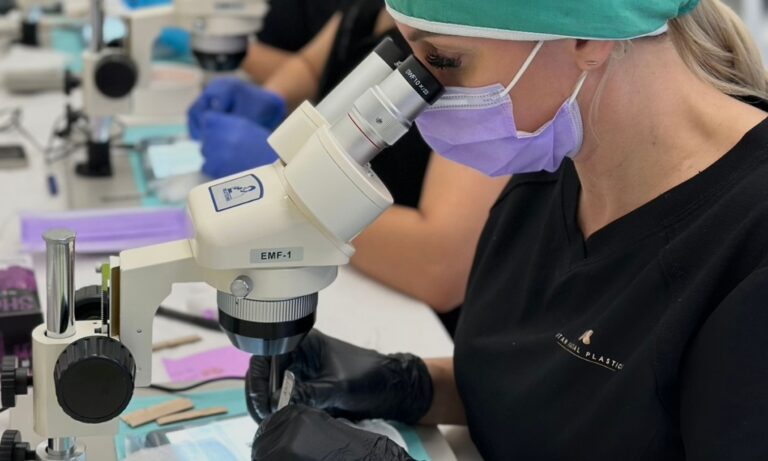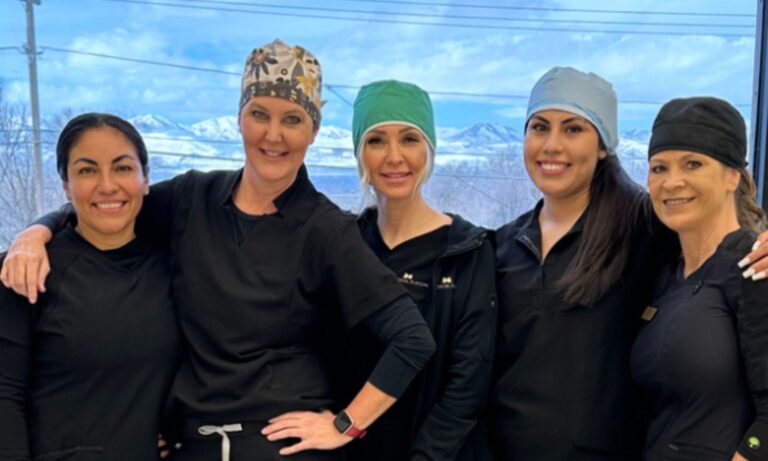In the quest for a fuller head of hair, many people overlook one crucial aspect: the expertise of hair transplant technicians. While it may be tempting to focus solely on the surgeon’s credentials, it’s often the hands-on skills and detailed knowledge of the technicians that make all the difference in achieving natural-looking results. These professionals are trained to meticulously extract and implant hair follicles, ensuring that patients walk away satisfied with their transformation. As we dive into the world of hair restoration, we’ll explore why these technicians are indispensable members of the surgical team and how their specialized training contributes to successful outcomes.
Hair transplant technicians play a crucial role in ensuring the success of hair restoration procedures, particularly in techniques like Follicular Unit Extraction (FUE), where their precision and expertise directly impact the quality of results. Their hands-on skills in extracting and implanting hair follicles are vital for achieving natural-looking outcomes and enhancing overall patient satisfaction.
Why Hair Transplant Technicians are Essential
Hair transplant technicians are not merely assistants; they are skilled professionals whose expertise is vital for the meticulous process of hair restoration. During Follicular Unit Extraction (FUE), these technicians spend hours learning to extract individual hair follicles with precision. This process involves knowledge of follicle anatomy and an understanding of how to minimize damage and trauma—a key factor in ensuring successful graft survival.

Imagine a scenario where a technician hurries through the extraction process without the necessary care. The result could mean a botched procedure where follicles are damaged or die prematurely, leading to unsatisfactory results for patients. This careful attention to detail extends throughout the entire procedure, including graft preparation and placement, which are performed by these highly specialized individuals. Their workload often comprises around 80% of the hands-on work, making them indispensable team members in any hair restoration clinic.
It’s essential to recognize that the quality of a technician can often be the difference between a natural-looking result and an unsatisfactory one.
One should prioritize clinics known for their experienced technicians, as this directly correlates with patient satisfaction. Patients seeking hair restoration should actively inquire about the qualifications and training of technicians before proceeding with their chosen clinic.
When patients choose a clinic for their hair transplant, they should not solely focus on obtaining a renowned surgeon but also consider the supporting cast. A collaborative team effort between doctors and technicians ensures that every aspect of the procedure is executed with mastery, leading to more predictable outcomes and higher satisfaction rates for patients.
As you contemplate your options for hair restoration, don’t overlook the significance of technician expertise. With surgical skill paired with meticulous handling, these professionals are at the heart of effective transformation journeys in this field.
Key Roles in Hair Transplants
Hair transplant technicians aren’t just there to assist—they play a key role throughout the entire process. Their expertise is vital from start to finish, and it begins long before the surgery itself. These specialists handle crucial pre-op assessments that lay the foundation for a successful result. They gather important patient information, have thorough consultations, and help prepare patients both physically and mentally for the procedure. In doing so, they ease any worries patients may have and create a trusting, professional environment.
Intra-Operative Roles
Once in the operating room, hair transplant technicians play a key role in assisting the surgeon with the procedure. They take on the delicate task of extracting hair follicles with precision, a critical step for achieving natural-looking results. During Follicular Unit Extraction (FUE), the technicians carefully remove each follicle from the donor area, a process that requires both skill and an in-depth understanding of hair growth patterns and follicle health. After extraction, they meticulously dissect and prepare the follicles, ensuring they’re viable and properly organized for implantation into the recipient area.
In Follicular Unit Transplantation (FUT) surgery, they assist the surgeon by carefully harvesting a strip of scalp from the donor area, which is then divided into individual follicular units under their precise guidance. The technicians meticulously dissect these units to ensure they’re of the highest quality and ready for implantation into the recipient area, ensuring optimal graft survival and natural-looking results.
But their job doesn’t stop there; it continues to intensify as they assist surgeons in implanting these grafts during the surgery.
While the surgeon makes strategic decisions about graft placement and angles, technicians provide invaluable support by monitoring conditions within the operating room. Their role includes arranging grafts according to planned patterns and densities. It’s a fine balance of art and science, that ultimately influences how natural the final appearance will be. The technicians ensure that each strand aligns with the patient’s natural hairline and grows in the right direction.
Once the procedure wraps up, it’s crucial that technicians also play a key role in guiding patients effectively through recovery.
Post-Operative Roles
Following surgery, technicians transition into post-operative care providers. They offer comprehensive instructions on how to maintain grafts for optimal healing while avoiding complications during recovery. This might include dietary suggestions or information on gentle care techniques. Their ongoing support reinforces patient confidence during what can often feel like an uncertain period following surgery. Regular follow-ups give patients peace of mind and bolster their commitment to adhering to prescribed aftercare routines.
Throughout all stages—pre-operative assessments, intra-operative assistance, and post-operative care—hair transplant technicians play an integral role in ensuring that patients achieve satisfying outcomes from their hair restoration journeys.
Essential Skills and Training
The world of hair transplantation is intricate, requiring highly specialized expertise. At the core of this expertise are essential skills that allow technicians to perform their tasks with precision. They must possess fine motor skills to handle delicate instruments carefully. Every tiny movement counts when extracting and implanting hair follicles; a steady hand can make the difference between a successful procedure and an unsatisfactory outcome.
To further elaborate, here are some crucial attributes every hair transplant technician should have:
- Eye for Detail: Technicians require keen observational skills to identify the best donor follicles, ensuring that only high-quality grafts are selected for transplantation.
- Knowledge of Anatomy: Understanding the anatomy of the scalp—specifically hair growth patterns—enables technicians to make informed decisions during the procedure. They must be well-acquainted with how hair follicles behave to best mimic natural growth.
- Patient Communication: Effective communication is vital. Technicians often serve as a reassuring presence for patients, providing guidance and support while addressing their concerns throughout the process.
Beyond just these skills, thorough training also involves staying updated with evolving techniques and technologies. An ongoing educational approach is as important as mastering initial competencies.
Enhancing Patient Experience
Patient experience can be significantly influenced by the quality of care provided by technicians. In the realm of hair restoration, where emotions and expectations run high, it’s vital that patients feel supported and well-informed throughout the process.
One way to achieve this is through reducing anxiety. Patients often arrive with apprehensions about what lies ahead—the thought of undergoing a procedure can be daunting. However, a reassuring and competent technician can make all the difference in alleviating these concerns by providing clear information and empathy.
When technicians engage with patients meaningfully, it’s as if they create a bridge of trust. Providing thorough explanations of the procedure steps walks patients through their upcoming journey and fosters a sense of empowerment. This is where experienced technicians shine; their interpersonal skills allow them to connect genuinely with each patient, helping to set realistic expectations while simultaneously addressing any fears. A smiling face and calm demeanor can turn anxious energy into positive anticipation for the results to come.
Moving beyond verbal reassurance, ensuring physical comfort also plays a critical role in improving patient satisfaction during lengthy procedures. Technicians dedicate themselves to meticulously monitoring patients’ needs throughout these multi-hour sessions. Small acts—like providing supportive cushions or ensuring appropriate hydration—make a significant impact on how comfortable patients feel under the surgical lights.
Technicians versus Doctors

When it comes to hair restoration, there exists a dynamic teamwork between technicians and doctors that can be easily overlooked. While doctors play an essential role in strategizing and executing the hair transplant process, the technicians are the unsung heroes meticulously handling the intricate, labor-intensive tasks that ensure everything runs smoothly. Think of the doctor as a skilled conductor who leads the orchestra and the technicians as expert musicians playing their parts with precision.
Hair transplant technicians play a vital role in the success of the procedure by focusing on the precise extraction and implantation of hair follicles. Their expertise in techniques like Follicular Unit Extraction (FUE) ensures each follicle is handled delicately, as even the smallest mistake can affect the results. While doctors plan the overall treatment and manage donor hair extraction, technicians specialize in the meticulous tasks of follicle handling, contributing directly to achieving natural-looking results.
Technician training centers on mastering follicle extraction and preparation, while doctors undergo extensive medical education in surgery and patient care. Despite differing training, both are essential to the process. Technicians have frequent patient interactions during the procedure, offering reassurance and explaining each step, which helps patients feel comfortable. Meanwhile, doctors oversee the broader aspects of the procedure, including consultations, treatment planning, and post-operative care.
This division of responsibilities creates a collaborative environment where both technicians and doctors complement each other. While some argue doctors should manage every aspect of hair restoration, the specialized skills of technicians are invaluable in ensuring a smooth, successful procedure. The combined expertise of both roles is key to achieving optimal results.
Future Trends in Hair Transplantation
The outlook of hair restoration is rapidly changing, primarily thanks to remarkable advancements in technology and research. One significant development is the integration of automation into various stages of the hair transplant process. Automation in hair transplants offers increased precision and efficiency, but it also comes with some downsides. It may lack the nuanced judgment of skilled technicians, and reliance on technology can lead to reduced personalization and potential malfunctions. Additionally, high initial costs, the risk of over-dependence on machines, and the need for specialized training are key considerations when adopting automated systems.
In the continually evolving world of hair transplantation, adapting to breakthrough technologies is essential for achieving optimal results. As patients become more informed about these advancements, their expectations will grow—and rightly so—as the focus shifts toward personalized care based on techniques that have a substantial impact. Understanding these future trends enriches a technician’s skillset and positions them as trusted professionals in a vibrant, cutting-edge field.
As technology continues to advance, so too does the potential for innovative solutions in hair restoration that emphasize quality care and patient satisfaction. In summary, it’s clear how crucial it is to have a skilled surgeon and a qualified team of technicians overseeing your hair transplant procedure.
Additional Resources
- How Successful Is Hair Transplant Surgery?
- Hair Transplants: A Comparison of USA vs. Turkey Options
- How Common is Hair Transplant Surgery Becoming?
- The Cost of Hair Transplant Surgery
- The Advantages and Disadvantages of Hair Transplant Surgery
- What is Scalp Micropigmentation (SMP)?
- Hair Transplant for Eyebrows: Everything You Need to Know
If you are someone who is considering a hair transplant, UFP Hair Restoration offers excellent options.
Contact us to schedule in Layton or Draper, UT locations for a hair restoration consultation or call 801.849.8140.